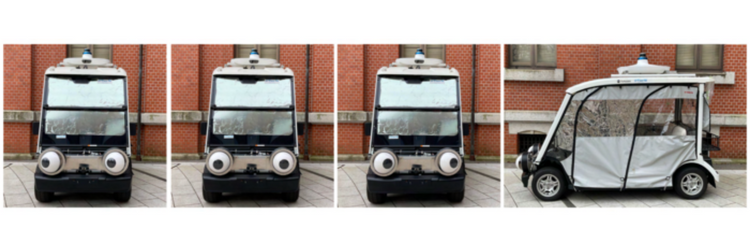Robotic Eyes on Autonomous Vehicles May Improve Pedestrian Safety
According to research by the University of Tokyo, Japan, adding robotic eyes to autonomous vehicles can save lives.
During the study, participants worked in virtual reality (VR) and needed to determine whether to cross the road in front of a moving vehicle or to wait. Researchers fitted some automobiles with large robotic googly eyes, allowing them to direct the cars’ “gaze” at or away from pedestrians.
In addition to looking cute, the moving eyes empowered the participants to determine whether the car looked at them or not. Knowing whether the car “saw” them resulted in safer, more efficient decision-making.
“There is not enough investigation into the interaction between self-driving cars and the people around them, such as pedestrians. So, we need more investigation and effort into such interaction to bring safety and assurance to society regarding self-driving cars,” said Professor Takeo Igarashi from the Graduate School of Information Science and Technology.
Eighteen people participated in the study, nine men and nine women aged 18 through 49. They were given 3 seconds in each of four scenarios to decide whether to cross the road in front of a moving vehicle.
“The results suggested a clear difference between genders, which was very surprising and unexpected,” said Project Lecturer Chia-Ming Chang.
The men made more risky choices overall, while the women made safer, more inefficient decisions. However, the addition of the eyes did reduce the number of dangerous and inefficient choices for both.
Interestingly, the men reported feeling that the situation was more dangerous when the eyes looked away, and women said they felt safer when the car looked at them.
While people might make different decisions in VR than they would in real life, this research moves us closer to safer autonomous vehicles.
“Moving from manual driving to auto driving is a huge change. If eyes can actually contribute to safety and reduce traffic accidents, we should seriously consider adding them,” said Igarashi. “I hope this research encourages other groups to try similar ideas, anything that facilitates better interaction between self-driving cars and pedestrians, which ultimately saves people’s lives.”

